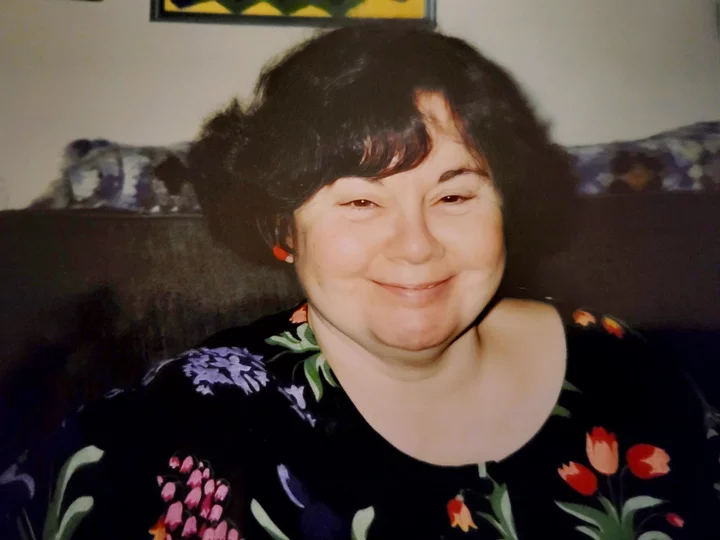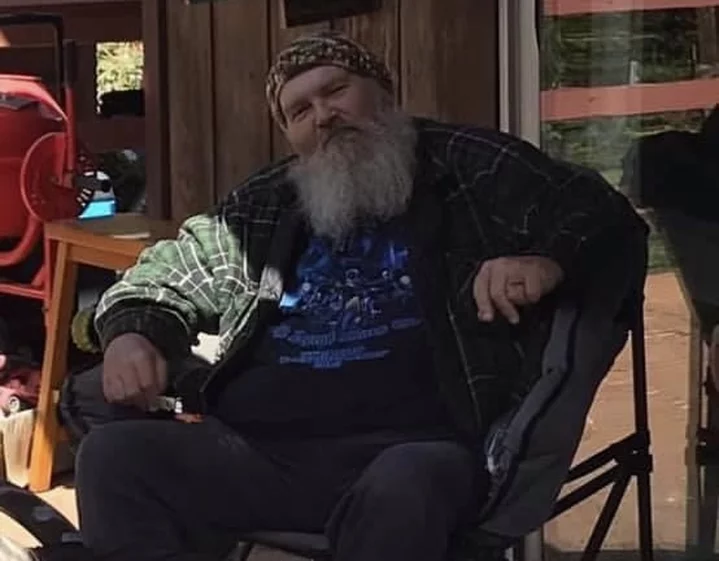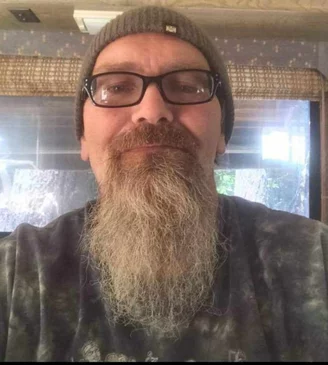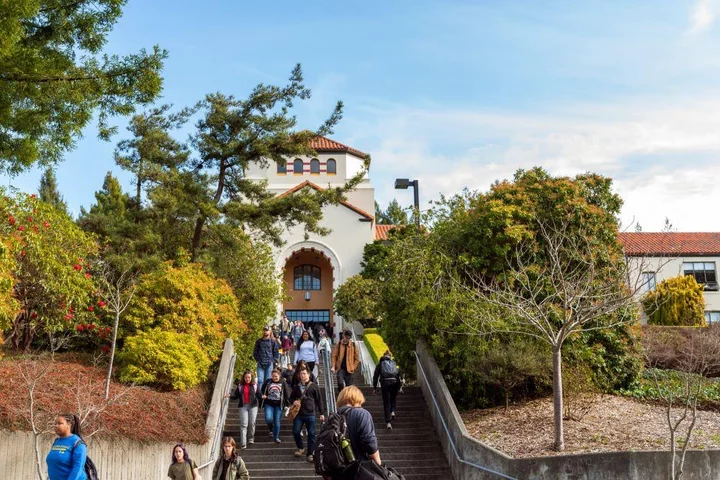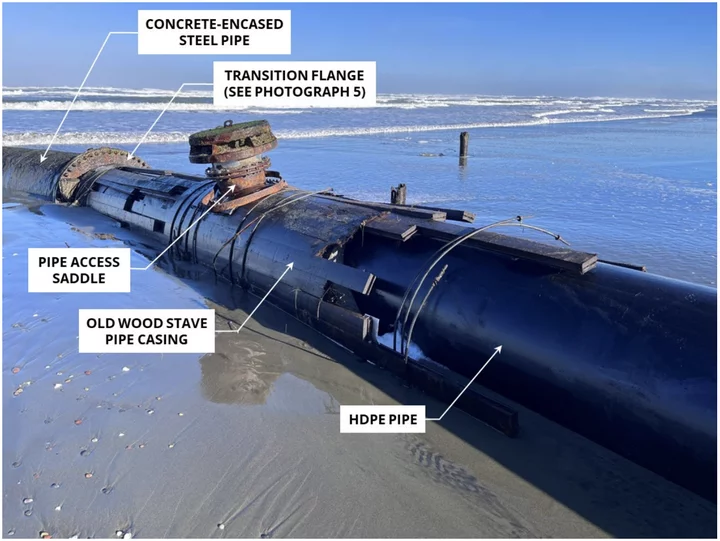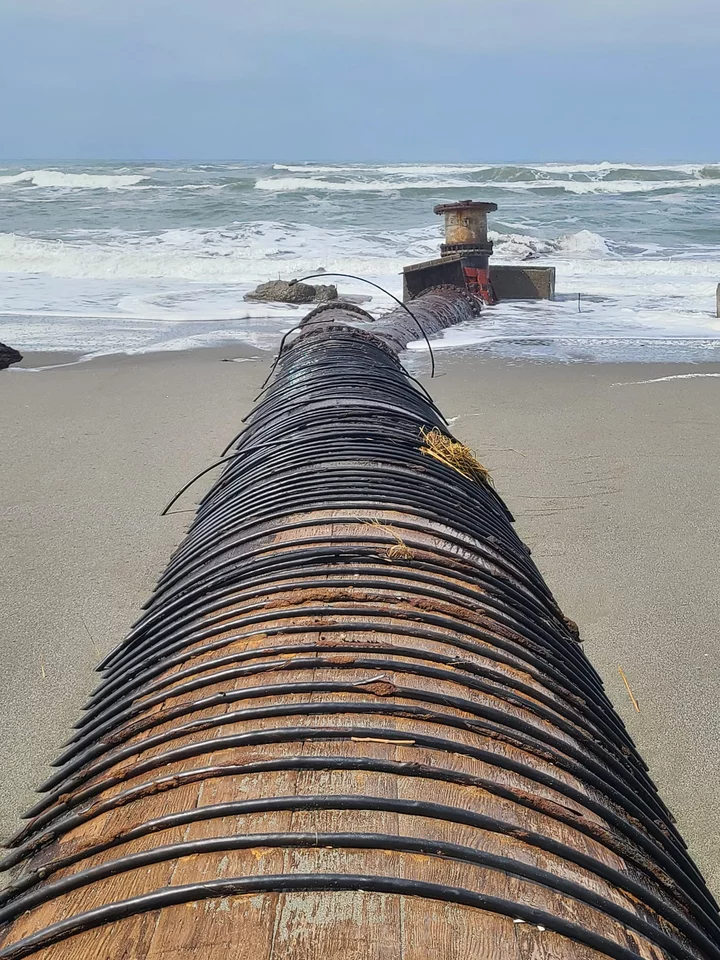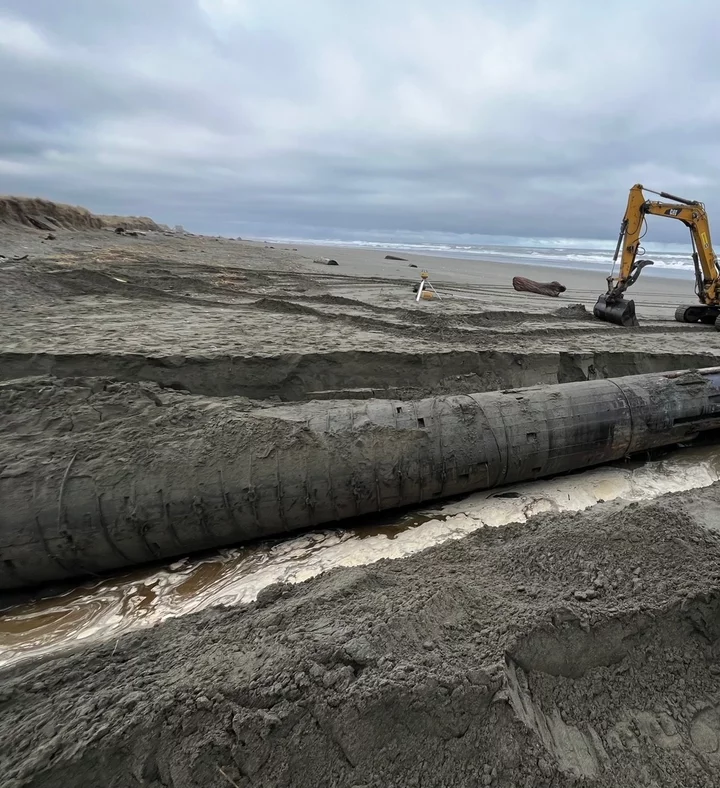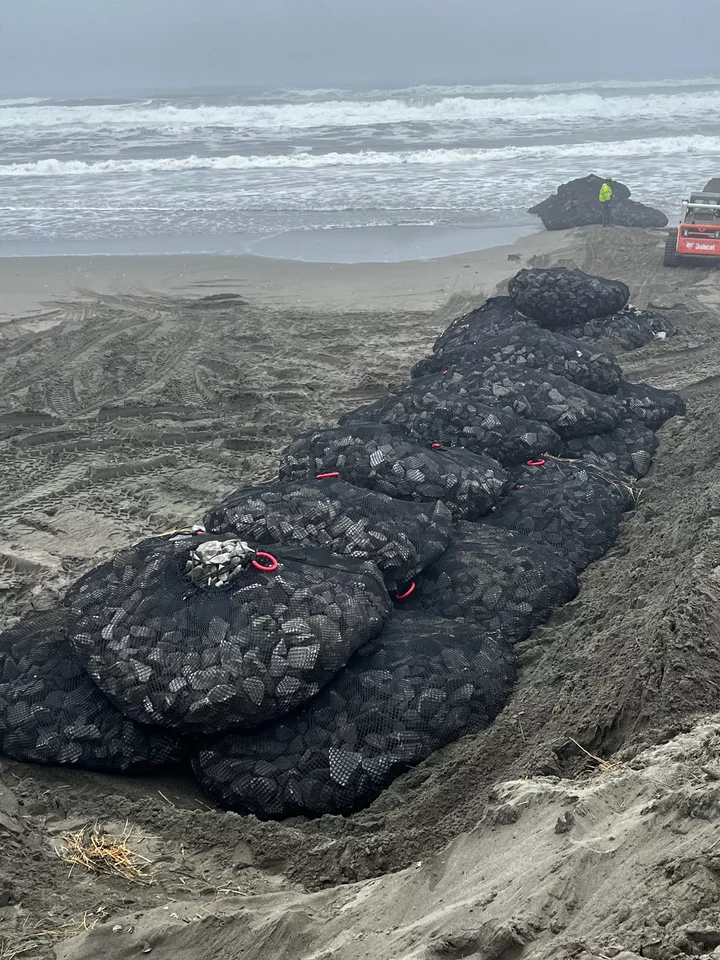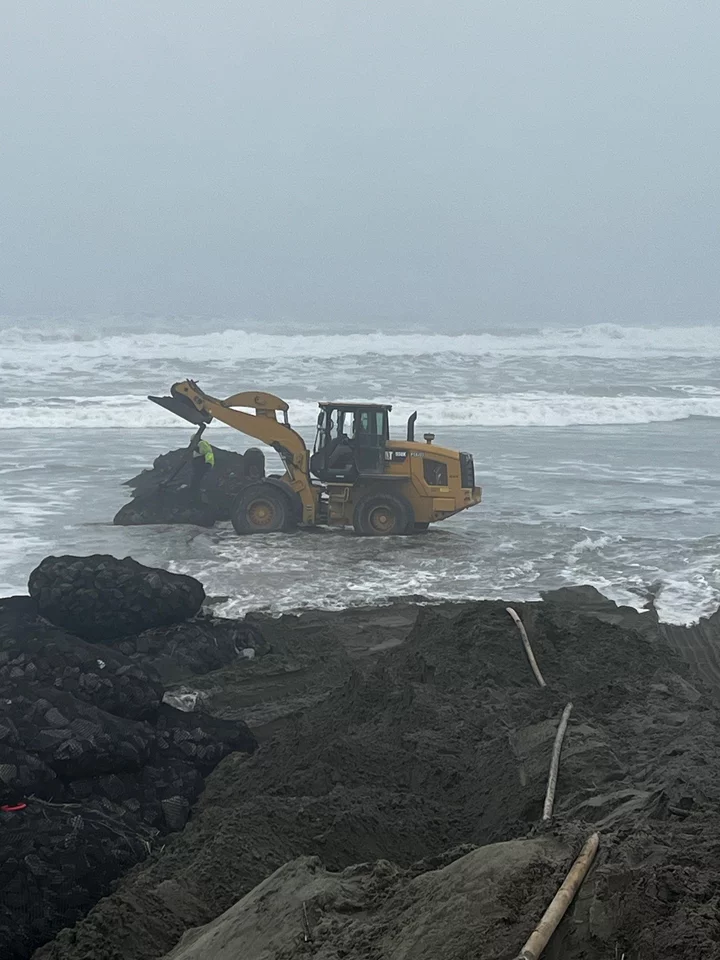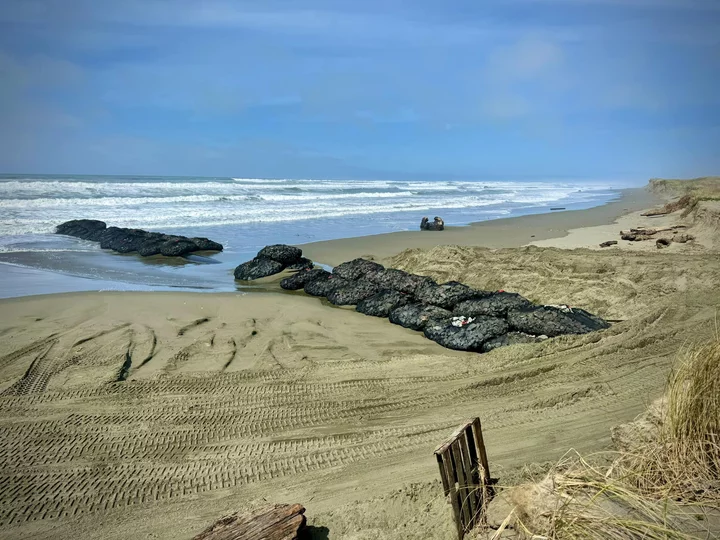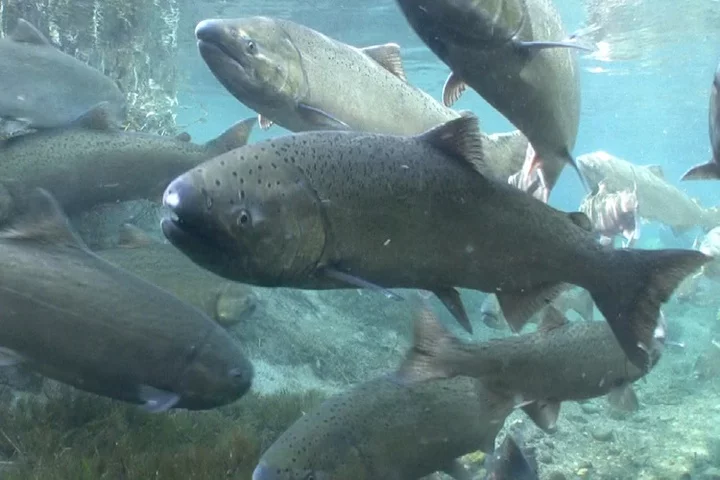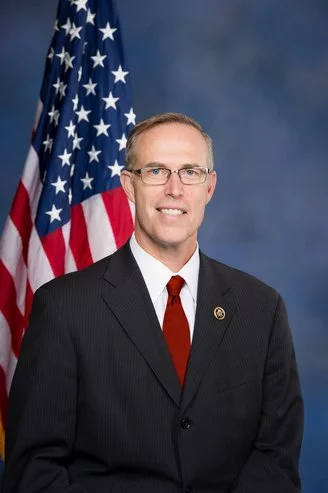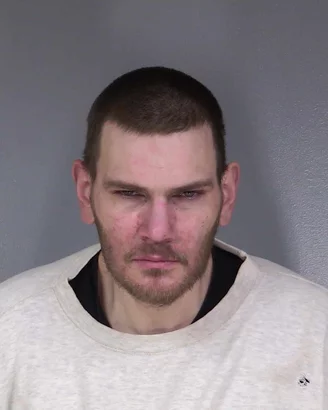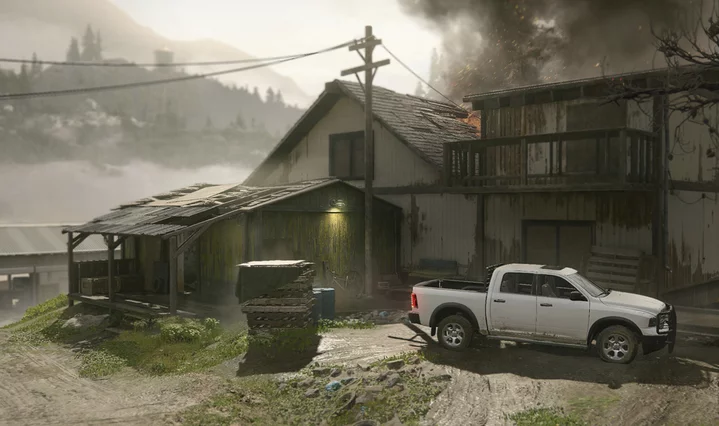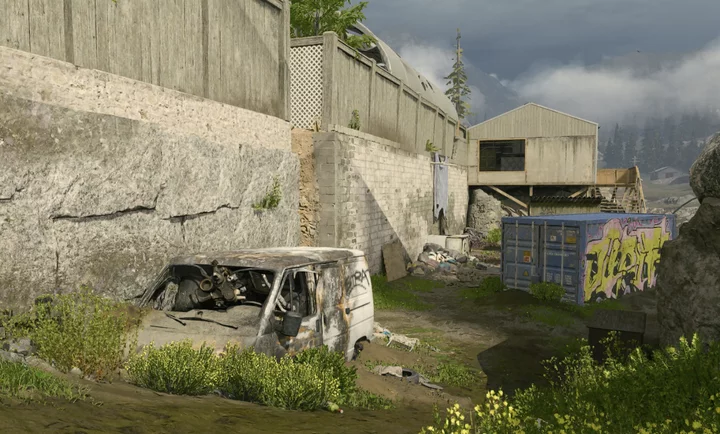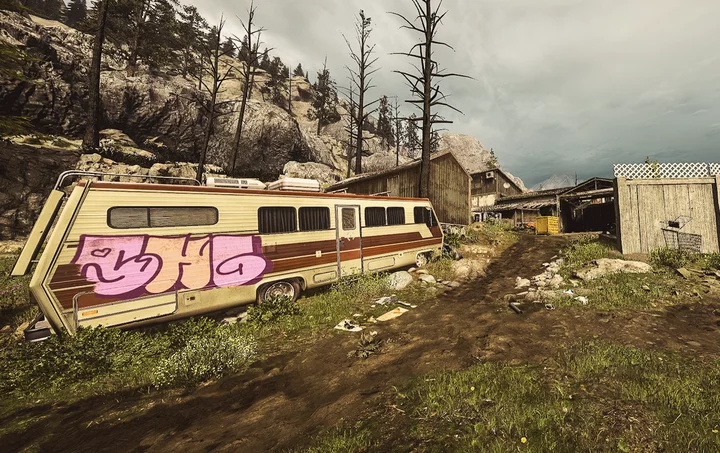OBITUARY: Michele (Feldman) Baughman, 1937-2024
LoCO Staff / Friday, April 12 @ 7:18 a.m. / Obits
Michele (Feldman) Baughman
May 12, 1937-
April 1, 2024
On Monday, April 1, 2024, at 7:42 pm, Michele (Feldman) Baughman died peacefully at home surrounded by her dearest friends. She was preceded in death by her parents, Mr. and Mrs. Feldman, her brother Roland, and her beloved husband of 54 years, Don Patrick Baughman.
Michele was born on May 12, 1937, in Paris, France. Her parents owned a prestigious Jewish restaurant in Paris. In 1939, during the Nazi occupation, the family fled from France into Spain and boarded a ship to Montreal, Canada. Michele was just two years old at the time of their escape. She was born with congenital hip dysplasia and had multiple surgeries throughout her life. When she was thirteen years old her brother taught her to walk. As a young woman she moved to San Francisco where she met her “one and only”, Don, a young Army veteran from Minnesota. They fell deeply in love and were married in 1966. They came to Humboldt County in 1969.
The Humboldt Open Door Clinic first opened in 1971, in what is now The Tin Can Mailman Bookstore, on the corner of 10th and H St in Arcata. Michele thought it was a Veterinary clinic and brought her cat in for a check-up. She was told they could not help her cat because they were a medical clinic serving people, but they hired her on the spot. She was the first HODC receptionist and then became the primary scheduling administrator “extraordinaire” where she served the community for 30 years! Upon her retirement, CEO Herrmann Spetzler gifted her with a round trip ticket to Paris. On March 17th, 2003, she went on the trip of a lifetime to France and Italy for 17 days, accompanied by her friend, April, who wheeled Michele in her chariot over the ancient cobblestone streets of Europe. She called Don nearly every day to tell him of her adventures, even from a phone booth at the Palace in Monaco.
Michele and April met at the clinic in 1977. They became great friends for the next 47 years! When they first met, Michele was able to walk a short distance with a cane. As walking became more difficult, she used two canes, then she purchased an electric trike. She could be seen riding her “Lark” all around town. She was a reckless driver! In 1997 she bought a fancy tricycle that she pedaled with her hands. She was often spotted riding her trike all over Arcata and Bayside. She and April did the 10-mile Tour of the Unknown Coast together. Michele had a lively group of friends coined “The Breakfast Club” which often included K.T., Audrey, Terri, Cheyenne, Shelley, Theresa, Pam, Jovonne, Jeri, Connie, and April. Michele loved to dine out at Larrupin’s, Abruzzi’s, Folie Deuce, La Trattoria, and other fine restaurants in Humboldt County. She enjoyed celebrating birthdays, family holidays, clinic parties, and camping at Smith River, Klamath, Coon Creek, Forest Glen, and Yosemite National Park.
Michele was rambunctious and enthusiastic about life. She was a kind, devoted friend with a tender heart, and she was especially fond of children and animals. Her laugh was effervescent and contagious. Her fiercely positive spirit transcended all physical limitations. Her wisdom and intuition were precise. With her intelligence and razor-sharp wit, she was a force of nature to be reckoned with, and a joy to all who knew her. The strength of her character was as powerful as her love of life. After Don died on April 20, 2020, during the pandemic, she moved to Michael and April’s studio apartment, where she was able to live independently for almost four years. She loved weekly outings to the Arcata Marsh, the Farmer’s Market, Café’ Brio (for French fries), and ice cream at the Arcata Scoop.
Many thanks to Dr. Sarah Sherer, her primary care physician, and the staff at Humboldt Open Door Community Health Center, Kelli Swartz (Humboldt County Public Guardian), the nurses at Mad River Home Health, Humboldt Country Department of Health and Human Services, Dr. Tong at Mad River Community Hospital (for allowing her to come home), and a very special thanks to her In-Home Health Services provider, Paul Humphry, for his continued care and devotion to Michele for the remainder of her life. (The joke’s on you, Paul. She left us on April Fool’s Day!)
A Memorial Bash will be held at The Plaza View Room in Arcata (Jacoby Storehouse, third floor) on Saturday, May 18 from 6-8 p.m., catered by Uniquely Yours. There will be a no host bar. Bring your favorite uncensored stories to share. “The Backseat Drivers” will provide the music, with love to light her way.
###
The obituary above was submitted on behalf of Michele Baughman’s loved ones. The Lost Coast Outpost runs obituaries of Humboldt County residents at no charge. See guidelines here.
BOOKED
Today: 7 felonies, 13 misdemeanors, 0 infractions
JUDGED
Humboldt County Superior Court Calendar: Today
CHP REPORTS
ELSEWHERE
Popular Mechanics: A New Use for Old Concrete Could Revolutionize Carbon Capture
Wired: Ads for Explicit ‘AI Girlfriends’ Are Swarming Facebook and Instagram
Fishing the North Coast : Double Your Pleasure – Rockfish and Halibut to Open May 1
Wild Rivers Outpost: Brookings City Council Reiterates Its Opposition to Offshore Wind Turbines
OBITUARY: Melvin Leon Snow Jr., 1964-2024
LoCO Staff / Friday, April 12 @ 7:08 a.m. / Obits
Melvin Leon Snow Jr., also known as Mel, Ralph, or Boo, passed away on April 1, 2024, in Eureka after a hard fought battle with cancer. He was born on August 19, 1964, in Crescent City, California the year of the largest flood in recorded history in Northern California, where he grew up and raised his family.
Melvin was a versatile individual who excelled in various fields throughout his life. He worked in different jobs such as at the Fisheries in Eureka, Eureka City Schools as a janitor, mechanic, non-emergency medical transport, In-Home Supportive Services, RV repair at Santa Rosa RV, and as the Head of Janitorial for Safeway. He also had a passion for odd jobs like lawn care and working in the legal cannabis industry.
In his free time, Melvin enjoyed repairing and customizing VW bugs, being a motorcycle enthusiast, woodworking, cultivating plants, and traveling. He was often seen smoking a joint and fixing something or building in his later years. He truly was a Jack of all trades with a knack for fixing things.
Melvin was a caring and selfless individual who was always willing to lend a helping hand to his friends and family. He was known for his heroic acts, such as running into a burning building at the age of 19 to save people during a house fire. Melvin took on the role of caregiver for many, including his younger sisters, his two daughters, and his two adopted sons.
Melvin often called himself a “Gypsy”. He preferred to live in a home with wheels whether it was a converted bus or van, 5th wheel, or RV he loved to travel and be on the go. Melvin made friends no matter where he went often by offering a helping hand. His favorite place to go was Mount Rushmore and Stergis.
He is survived by his sisters, Maggie Sylvies and Cecil Sylvies, his daughters Vera Greenwood and Carolyn Snow, his grandchildren Alison, Athena, Martine, and Dylan, many nieces and nephews, as well as his roommate and close friend Angelique Humbird. Melvin was preceded in death by his mother, Caroline Sylvies, his sons Ian and Deric, and his companion dog and best friend, Kasha.
At Melvin’s request, no servuices will be held. He will be remembered for his kind and generous spirit, his love for adventure, and his willingness to help others in need. May he rest in peace.
###
Melvin Leon “Mel, Ralph, Boo” Snow Jr. took his first breath on August 19, 1964 and due to an unforgiving battle to cancer took his last breath on April 1, 2024.
Melvin grew up in Humboldt County, attended Eureka City Schools and graduated from Zoe Barnum. He held many jobs since he was 18. His first job was working in maintenance for the Eureka Housing Authority. No matter what job he had he always made time to work on his motorcycles and cars. His motorcycles were the loves of his life, especially when he had his Harley.
He was a survivor of the Humboldt County 1964 flood. He was just a baby but he was a tough li’l guy. He was an unknown hero at just the age of 19. When the apartment complex his family lived in went up in flames he rushed into the fire, went to an upstairs apartment and saved an elderly lady and her son. He almost lost his own life but that was just the kind of person Mel was, always helping where help was needed and did it whole heartedly and expected nothing in return.
He became a father and he enjoyed watching his daughters grow up. Once they were grown he became a rolling stone and he traveled. He never liked to be in one place too long. He had been all over the U.S. he always seem to find his way back to Humboldt though.
Melvin had a great fur companion, Kasha. They were inseparable. When Kasha passed on he remained faithful to her. He never got another dog after her.
The past two years were his most roughest. Life got hard physically and finally last year the doctors found out why, they detected a cancer in his blood. After a year of fighting to add a little more time to his life, he passed away peacefully in his sleep.
Melvin is preceded in death by his mother, Caroline Sylvies, his son Ian,his Aunt Nancy Simmons and his beloved fur companion Kasha.
Melvin is survived by his daughter Vera Greenwood (Michael) and Carolyn Snow. His grandchildren Martine, Allison and Athena. His sisters Cecil Sylvies and Maggie Sylvies (Alejandro), his nieces and nephews Angelica, Aureli, Alejandro Jr., Natalia, James, Fire, his great nephew Marcelo and his special friend Angelique.
Upon Melvin’s request there will be no services. He wanted to be cremated and have his ashes spread in a place held special to him, the beach. His arrangements for cremation were handles by Ayers Funeral Services.
The family would like to say a special thank you to all the staff at St. Joseph’s Hospital for everything they done to make Melvin comfortable as possible in his last days.
###
The obituary above was submitted on behalf of Melvin Snow’s loved ones. The Lost Coast Outpost runs obituaries of Humboldt County residents at no charge. See guidelines here.
Cal Poly Humboldt and UC Davis Launch Arcata-Based Program to Prepare Native Americans for Med School
LoCO Staff / Thursday, April 11 @ 4:01 p.m. / Cal Poly Humboldt , Tribes
Photo courtesy of Cal Poly Humboldt.
Press release from Cal Poly Humboldt:
Cal Poly Humboldt and the UC Davis School of Medicine have created the state’s first post-graduate education program to help prepare Native American students for medical school at UC Davis.
The Huwighurruk (pronounced hee-way-gou-duck) Tribal Health Postbaccalaureate Program seeks to enroll pre-med students passionate about providing health care to American Indian and Alaska Native communities in rural and urban areas.In the Wiyot language, huwighurruk means plants, grass, leaves, and medicine. Huwighurruk scholars will be immersed in a culturally-focused framework intertwined with science courses at Cal Poly Humboldt. The program will provide eligible students with a stipend for living and tuition costs, including those associated with MCAT preparation, and mentorship with local Native physicians.
The hope is that once students graduate from the UC Davis School of Medicine, they’ll become doctors for Native American communities in rural and urban areas that are often medically underserved due to a lack of primary care physicians. According to research from the Association of American Medical Colleges, about 50% of Native American students who apply to a medical school are not admitted; and of that, 43% never apply again. Fewer than 1% of doctors in the United States are Native American.
The Huwighurruk program is the first postbaccalaureate program in the state aimed at helping Native American students in California get into medical school while keeping a focus on Tribal traditions and values through mentorships and connections.
“In Native culture, one of the most important things is community and connection, especially feeling that connection with your family and tribe. With Indigenous peoples, we talk about the Earth, the plants, and the medicine and ceremony. It’s that connection with Native culture and the sense of community itself that students can relate to through the Huwighurruk curriculum,” says Dr. Antoinette Martinez (‘94, Psychology), a Family Medicine/OB physician at United Indian Health Services in Humboldt County and co-director of Tribal Health PRIME for UC Davis School of Medicine.
Students who complete the year-long Huwighurruk program with a 3.7 GPA or higher, score 499 or higher on the MCAT, and complete all the prerequisite courses for the UC Davis School of Medicine will receive conditional acceptance into the school, with additional funding towards tuition.
“It’s tough to get into medical school. This program aims to break down the barriers associated with applying to medical school. It’s disheartening to know that 43% of Native students never apply again, so we want to connect with those aspiring medical students to successfully recruit, retain, and train them to accomplish their goals,” Martinez says.
Martinez, along with Cutcha Risling Baldy, former chair of the Native American Studies department, will co-direct the Huwighurruk program. Biology Professor Amy Sprowles will assist with the program’s science courses. The Indian Teacher and Educational Personnel Program (ITEPP) will be the designated hub for the Huwighurruk program, which is set to begin next fall.
To apply, eligible students must be citizens or descendants of a federally recognized American Indian/Alaska Native Tribe or California Indian Roll of 1971, are residents of California, and have demonstrated a history of commitment to practice in the American Indian/Alaska Native community.
Huwighurruk is supported by a grant from the Northwest Native American Center for Excellence and funding from the UC Davis School of Medicine. In establishing the new program at Cal Poly Humboldt, UC Davis drew on its experience with a similar program called Wy’east Medicine, which is a partnership between Washington State University, Oregon Health & Science University, and UC Davis.
“We were thoughtful about choosing the right place for this program, where we knew students would be supported, where students would be able to engage with local tribes and community members, and where we would be able to come in and help support them as best we can in the building of the program. So we elected to do our program at Cal Poly Humboldt because of all the existing student resources and support,” says Charlene Green, assistant dean of admissions, outreach, and diversity at the UC Davis School of Medicine. “For us, it felt like the right decision.”
As an alumnus, Martinez attests to the excellent student resources and mentorship she received as a student at Humboldt.
“I credit Humboldt and ITEPP for supporting me through the process of completing my science coursework and believing that medical school admission was attainable. Without them, I might have given up,” Martinez said. “The connection to the ITEPP community and coursework on Native American issues helped me get through the pre-med coursework. The community and cultural integration at Humboldt are huge pluses for Huwighurruk students going through this process.”
UC Davis has been offering a successful post-baccalaureate premed program for years to assist college graduates from disadvantaged backgrounds in becoming more competitive applicants for medical school.
UC Davis’ California Postbaccalaureate Consortium will be hosting a virtual informational session for special reapplicant sessions for medical school applicants on Monday, April 22, from 3-4 p.m. For more information about the Huwighurruk program, contact tribalhealth@ucdavis.edu.
(PHOTOS) The Harbor District’s Big Ocean Outfall Pipe Got Exposed by Major Beach Erosion From Winter Storms
Ryan Burns / Thursday, April 11 @ 2:49 p.m. / How ‘Bout That Weather , Local Government
Photo via the HBHRCD.
###
A week ago we wrote about severe beach erosion along the North Coast caused by the uncommonly long, El Niño-juiced winter weather pattern from which we just emerged.
Recent beachgoers near Samoa encountered more evidence of this phenomenon: two big industrial pipelines that are usually buried underground have been exposed, their girth emerging from the sand dunes to drape across the beach slope like massive, mechanized worms trying to escape into the sea.
A currently unused outfall pipe on the peninsula. | Photo by Matthew O’Brien.
###
The northernmost pipeline is owned and operated by the Humboldt Bay Harbor, Recreation and Conservation District. Its landward segment is constructed of 36-inch diameter high-density polyethylene (HDPE), with a portion still encased in the original 48-inch redwood stave pipe. The part below the low tide line, which extends about a mile and a half out to sea, is concrete-encased steel.
This pipe was installed in the mid-1960s to discharge up to 40 million gallons per day of untreated pulp mill wastewater, which got dumped into the near-shore surf zone, causing health problems among local surfers. In the 1990s, following a legal settlement with the nonprofit Surfrider Foundation and the U.S. Environmental Protection Agency, the outfall line was rebuilt and extended.
Eventually, Nordic Aquafarms intends to use this outfall pipe to discharge more than 10 million gallons per day of treated wastewater in operating its land-based aquaculture facility, producing yellowtail kingfish. (The Coastal Commission approved a discharge permit in November.)
But for the time being, it’s just being used to discharge relatively small volumes of treated wastewater effluent from the town of Samoa, plus a bit of stormwater runoff from the Harbor District’s Redwood Marine Terminal II property, on the other side of New Navy Base Road.
Since the pipe is mostly empty these days, it’s not uncommon for the top to get exposed along the beach, typically in wintertime when winds from the northwest combine with large tidal swells to erode coastal sand. But this year the erosion was particularly extreme, and by late March more than 200 feet of pipe was completely exposed.
Pounded by waves, sections of the exterior redwood casing have broken off and been carried away [or, as one reader suggested, possible stolen], allowing the flexible HDPE pipe to “float” up out of the sand. Below are a couple of labeled photos from the Harbor District showing how the pipe looked on March 14.
The Harbor District blocked off the public parking area with boulders.
###
Reached by phone this morning, Harbor District Executive Director Chris Mikkelsen said staff was amazed by the effects of winter storms on the Samoa Beach.
“The amount of [pipe] exposure was unbelievable,” he said.
Staff immediately called in the engineering firm of SHN and applied for an emergency coastal development permit. At tonight’s meeting of the Harbor District’s Board of Commissioners, staff plans to offer a status update on the emergency repair work that has already begun and possible options for a more permanent fix.
The engineers at SHN have offered the following warning:
If the pipe is not secured, it will continue to move about as the waves and tides act on it, potentially damaging the HDPE pipe or causing a failure of the pipe. Vehicles also travel along this segment of beach periodically and could crash into the pipe and damage or destroy it if it is not buried and covered with protective material.
The pipe is a critical piece of infrastructure conveying treated wastewater effluent to an approved location offshore. If the pipe were to fail or require more significant repairs, service to the Town of Samoa WWTF could be interrupted, resulting in significant hardship for the community and potential negative environmental impacts.
In order to secure the pipeline and armor it against the elements, the District enlisted SHN to conduct emergency storm damage repairs. Over the past couple of days, work crews with tractors have dug a three- to five-foot-deep trench in the beach sand alongside and slightly beneath the pipe. Once reburied, large bags of rock were placed atop the pipe to keep it from floating out of the sand again.
When we say “large bags of rock,” we’re talking about roughly four tons per bag, with bags placed along both sides of the pipe and on top of it for the entire length of its exposure.
Excavators dug a new trench for the outfall pipe. | Image via HBHRCD.
Rock bags stacked atop the re-buried pipe. | Image via HBHRCD.
Placing massive rock bags atop the pipeline in the surf zone. | Photo via HBHRCD.
###
This emergency repair work is expected to take up to two weeks to complete. As for a longer-term fix, Mikkelsen said the Army Corps of Engineers is exploring the possibility of depositing dredge spoils from Humboldt Bay onto local beaches “to achieve beach nourishment and, over time, rebuild the beaches.”
In response to the winter storms, the county declared a state of emergency in January, and Mikkelsen said the Harbor District may seek FEMA assistance to offset the emergency repair work.
In the meantime, Mother Nature will do some repair work of her own. Troy Nicolini, meteorologist-in-charge at the Eureka office of the National Weather Service, said the weather has already changed in a way that will benefit local shorelines, with winds and surf patterns depositing sand back on the wave slope.
“I know it seems like the end of the world,” Nicolini said regarding this year’s severe erosion, “but we’re just now switching to a summertime pattern … so beaches should be rebuilt really quickly.”
Photo by Terry Cook.
Photo by Terry Cook.
The marine outfall pipe comes ashore on the beach just southwest of Samoa on the Samoa Peninsula.
‘We Must Do Better’: Rep. Jared Huffman Responds to Statewide Salmon Fishery Closure
LoCO Staff / Thursday, April 11 @ 2:39 p.m. / Environment , Fish
Federal fishery managers unanimously voted this week to cancel all commercial and recreational salmon fishing in California.| Photo: Michael Humling, U.S. Fish & Wildlife Service
PREVIOUSLY:
###
From the office of Rep. Jared Huffman:
Washington, D.C. – Today, U.S. Representative Jared Huffman (CA-02), Ranking Member of the House Natural Resources Subcommittee on Water, Wildlife, and Fisheries, released the following statement regarding the Pacific Fishery Management Council’s vote to cancel salmon fishing season off the California:
“Last year’s California’s salmon season closure was a crushing blow for our state. And now we’re facing the unprecedented back-to-back closures of the entire California salmon fishery. This is a new low – it’s not just devastating, it’s unacceptable,” said Rep. Huffman. “We just finished getting federal approval for last year’s California salmon disaster. I was relieved that with the reforms I’ve passed in Congress and all the political pressure we worked to build, the federal approval process was somewhat faster. But the amount of disaster money is not nearly enough for the needs of fishermen, tribes, businesses, and families who depend on healthy salmon fisheries – and now we have to start all over again for second consecutive disaster year.
“We must do better. On disaster relief, the state must speed up the process for quantifying impacts and the federal government must approve disaster funds faster and at higher levels. But we must also acknowledge that this scramble for federal fishery disaster funds is not the solution to the terrible downward spiral for California salmon fisheries. The solution is to prevent fishery disasters. That requires confronting wrongheaded policies that are killing salmon – failing to protect cold water supplies, starving rivers and tributaries of flows salmon need to survive, and over-pumping in the Delta during sensitive times for migrating salmon,” Huffman concluded.
In February of this year, Rep. Huffman secured $20 million in relief funds through the National Oceanic and Atmospheric Administration (NOAA) for California’s fishing community. This followed continued pressure from the congressman to secure this relief for the 2023 Sacramento River Fall Chinook and Klamath River Fall Chinook and inland salmon fisheries disasters.
In April 2023, Huffman, Padilla, and Panetta led their colleagues in an urgent letter to President Joe Biden and Secretary of Commerce Gina Raimondo, calling for them to swiftly declare a federal fishery disaster. Earlier that month, Rep. Huffman held a press conference with Speaker Emerita Nancy Pelosi, Representative Kevin Mullin, and fishing industry stakeholders to call attention to this disaster and highlight the people who will bear the brunt of the impacts of closing the salmon season. In addition to regular follow up with NOAA, Rep. Huffman held a call directly with NOAA Administrator Dr. Rick Spinrad to continue the pressure and encourage him to prompt action.
As part of his long-standing efforts to improve disaster relief for fisheries, Congressman Huffman was able to help secure an additional $300 million for fishery disaster declarations Fiscal Year 2023 Omnibus Appropriations bill. Congress also authorized new bipartisan fishery disaster relief language based on Congressman Jared Huffman and Senator Roger Wicker’s Fishery Resource Disasters Improvement Act. This language streamlines the process for declaring a federal fishery disaster and helps to quickly provide relief to affected communities. It also extends eligibility for federal fishery disaster funds not only to commercial fisheries, but also to charter fishing businesses and impacted tribes.
Humboldt Man Sentenced to 14 Years for Selling Fentanyl, Weapons, Among Other Charges
Andrew Goff / Thursday, April 11 @ 2:19 p.m. / Crime
Humboldt County Office of the District Attorney press release:
Today, Honorable Judge Steven M. Steward sentenced 43-year-old Ryan M. Doucet to serve 14 years in state prison. Doucet was convicted at jury trial in November 2023 of multiple crimes including child endangerment, possession of fentanyl with intent to sell, being a felon in possession of firearms, selling assault style weapons, and possession of destructive devices.
District Attorney Stacey Eads commends the Humboldt County Sheriff’s Office Neighborhood Watch Program and Bayside residents directly impacted by Doucet’s crimes for working together to help make our community a safer place.
PREVIOUSLY:
FINALLY! Shoot Up Your Friends in the New ‘Humboldt Growhouse’ DLC Map From ‘Call of Duty’
Andrew Goff / Thursday, April 11 @ 1:57 p.m. / Cannabis
Humboldt County, the latest war-torn video game hellscape | Activision
Just existing in Humboldt County can, at times, feel like you’re living in a video game. Well, now it’s official.
Earlier this month, Activision released a series of new multiplayer maps as downloadable content (DLC) for its latest release in the Call of Duty franchise, Call of Duty: Modern Warfare III. Essentially, these maps are virtual arenas where you can challenge your gamer friends to an all-out war. In their wisdom, Activision decided that a marijuana grow operation — specifically one in Humboldt — would be a suitable setting for spraying bullets at your fellow man.
Inside “the growroom.”
“Prepare for a strong aroma when descending upon the Growhouse facility in Humboldt County, California,” reads a page on the Call of Duty website, which goes on to list various obstacles players can use as cover from their enemies — an RV, a pickup truck, a water tank, an outhouse, a burnt car, a scissor lift, etc. The site also speaks of the degradation and disrepair of the “backwoods narcotics den nestled in remote foothills,” noting that “the roof of the main barn seems to have been struck by missile fire, and the rafters are still smoldering.” Fun!
Honestly, LoCO thinks the craggy granite hills that surround Activision’s “Growhouse” makes it look less like Humboldt County and more like eastern California but, if you’d like to judge for yourself, allow YouTuber “StoneyDogTv” to take you on a little video tour, above.
Having not spent any time in the Call of Duty universe, we can’t gauge whether or not “Growhouse” is any fun to play or not, so we will defer to the following review from a random Twitter gamer.
Growhouse is a terrible map #MW3 #CallofDuty
— Alan (@ATrecida) April 5, 2024
Hopefully this attention does not negatively impact our local industry.
No telling whether this operation has an active permit, but there does seem to be significant environmental degradation and illegal grading. Not setting a great example.
# # #
PREVIOUS HUMBOLDT VIDEO GAME EXPERIENCES:

